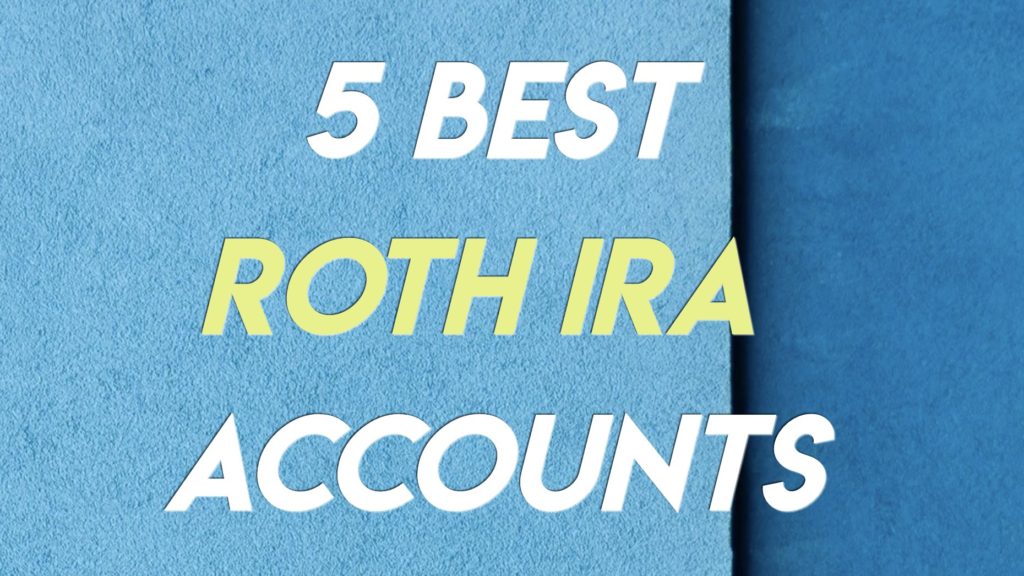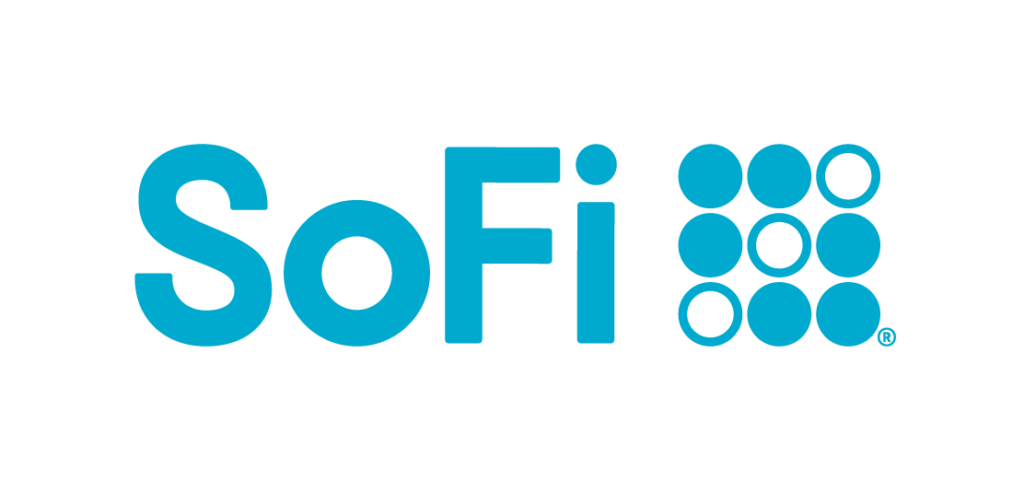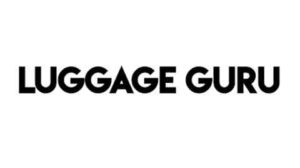by Daniel | Last Updated October 15th, 2022

We may earn a commission for purchases using our links, at no cost to you.
If you never heard of what a Roth IRA is then you’re potentially missing out on saving a large amount of money.
In this article, I’m going to talk you through what exactly a Roth IRA is, how to set one up, and then I’ll review and compare 5 different online brokers that all offer a way for you to manage your own Roth IRA.
1. SoFi Automated Investing

*Account minimum: $1
*Fees: $0
So the first online broker on this list is SoFi Automated Investing.
Founded in 2011, SoFi has managed to accumulate over 4 million members,
They also employ over 2,500 people, and in 2021 SoFi reported annual revenue of $985 million.
Now seeing that there are no account management fees and it is possible to open an account with SoFi Automated Investing with just $1, makes a great option for new investors that might not have access to a lot of money.
They even offer unlimited free access to certified financial planners who can help answer any questions you might have about different investment options.
A few good things to know about SoFi Automated Investing
- The account minimum is only $1
- There are no account management fees $0
- There is Free access to certified financial planners
So one downside of SoFi is that it doesn’t offer tax-loss harvesting. Now although this won’t really affect a Roth IRA as it is an untaxed investment, it is a worthwhile feature to have if you do decide to manage other investments through the same broker as your Roth IRA Account.
Associated Fees
- Termination fee $75 (outgoing transfer fee)
- Wire transfer out $20
- Returned check (insufficient funds)$15
- Paper statements $5
- IRA closing fee of $20
Pros & Cons
| Pros | Cons |
| *$1 account minimum | *No tax-loss harvesting |
| *No account management fees | |
| * Unlimited free access to certified financial planners |
2. Interactive Brokers

*Account minimum: $1
*Fees: $0
Now the second broker on this list is Interactive Brokers.
And they are quite popular amongst active day traders and offer two different plans, IBKR Lite and then IBKR Pro.
With the IBKR Lite plan, you are able to make unlimited free trades on US-listed stocks and ETFs.
With IBKR Pro which is considered one of the better trading platforms available for advanced traders, each trade will cost $0.005 per share, although this can be as low as $0.0005 per share if you trade more than 100,000,000 shares in a given month.
Interactive Brokers offers access to 150 markets in 33 countries where you can trade options, futures, currencies, bonds, funds, and more.
There is access to a wide variety of educational resources that can help you to better understand different markets and investment opportunities.
And there is a large range of both free and paid subscriptions that provide in-depth market research.
A few good things to know about Interactive Brokers
- There is no account minimum
- There are no account fees, this includes no transfer fee, no closing fee, and no fee for any inactivity.
- They also have access to Crypto, which included BTC, ETH, LTC, and BCH (bitcoin cash)
Pros & Cons
| Pros | Cons |
| *24/7 customer support | *Somewhat of a steep learning curve |
| *Fast order execution | |
| *Great for day traders |
3. Fidelity Investments

*Account minimum: $0
*Fees: $0
So the third Broker on this list is Fidelity Investments, and they just happen to be the largest brokerage firm in the US.
Currently, they have over 40 million individual investors and over $11 trillion in assets under management.
Now seeing that there are no account minimums and no account fees Fidelity is a great option for new investors that don’t have access to a large amount of money.
Fidelity Investments also offers free access to a wide range of different research from third-party companies that include:
- Standards & Poor
- Moodys Investor Service
- Zacks Investment Research
Associated Fees
- US Stocks and ETFs are free to trade.
- Live broker fee will cost $32.95 per trade.
- Closing an account or transferring an account will not cost anything.
Pros & Cons
| Pros | Cons |
| *No account minimum | * Fidelities broker-assisted trade fee of $32.95 |
| *No account fees, this includes no transfer fee, no closing fee, and no fee for any inactivity | *No access to Futures, commodities, or crypto trading. |
4. TD Ameritrade

So the 4th broker on this list is TD Ameritrade, and I actually use them to manage my ROTH IRA.
With no minimum account requirements and commission-free stock and ETF trading, TD Ameritrade is good for either new investors or experienced investors.
There is also access to the thinkorswim trading platform which is available to use either on your computer or via a mobile app.
Now setting up ThinkorSwim can initially be a bit tricky to learn, but I have a video here that explains how to set it up.
Now if you prefer not to download ThinkorSwim you can actually use their simple web trading platform, again either on your computer or by using their mobile app.
TD Ameritrade offers a large amount of free research and analysis from a variety of different companies that include:
And having access to this information is quite important if you do want to self-manage your Roth IRA account.
Basically, it will allow you to make more informed investment decisions.
The customer support provided by TD Ameritrade is really good, and there is help 24 hours a day 7 days a week which is extremely useful.
It is possible to talk to someone via phone, live chat, or in person at one of their locations.
Associated Fees
- US stocks and ETFs are free to trade.
- Partial account transfers are free but transferring an entire account will cost $75
- Having a live broker place a trade for you will cost $25.
- Paper statements will incur a fee of $2
- Wire transfer of $25
Pros & Cons
| Pros | Cons |
| *24/7 customer support | *If you transfer your entire account there will be a $75 fee |
| *Large range of educational content | |
5. Wealthfront

*Account minimum: $500
*Fees: 0.25%
So the last broker on this list is Wealthfront, which is one of the best low-cost robo-advisors around.
Wealthfront was one of the first robo-advisor to be made available for everyday investors back in 2008
Currently, they manage over $27 billion in client funds.
Now seeing that Wealthfront is a Robot-advisor makes it perfect for hands-off investors.
Now to open an account with Wealthfront you will need to contribute a minimum of $500, and then there will be an annual advisory fee of 0.25%, which is pretty normal compared to other robo-advisors.
A few things to know about WealthFront:
- Their Customer support is available from Mon – Fri from 9 am – 8 pm EST
- They have a Management fee of 0.25%
- Any account that is over $2 mill you will receive a 0.10% discount off the standard management fee
- And finally, They offer 239 different investments, 7 asset classes, and 2 Cryptocurrency trusts
Now a nice feature that is provided by Wealthfront is Tax-Loss Harvesting which is available on taxable accounts. (So no, this won’t be available on a ROTH IRA account as they are not taxed).
Basically with Tax-Loss Harvesting Wealthfront will monitor your account constantly and will take advantage of any losses your account might have and use them to claim a loss on the investment.
Apparently, they average a 1.8% increase in client’s after-tax returns, which is pretty good!
Ad as I mentioned before, It is worth noting that this will not be available for retirement accounts as they are not taxed.
Pros & Cons
| Pros | Cons |
| *Tax-Loss Harvesting | *$500 minimum account is required to get started |
| *Very easy to keep track of your investments | |
What is a Roth IRA?
Basically, a Roth IRA is an individual retirement account that provides users the ability to receive tax-free investments and withdrawals.
As long as you meet the current requirements for a Roth IRA, you will be able to invest your after-tax income into one of the many different online brokers who can then manage your investments.
Now the requirements that you need to meet to be able to take advantage of a Roth IRA are as follow:
- For 2022 if you are a Single taxpayer or head of a household the maximum income you can earn is $144,000 (and $153,000 in 2023).
- If you are Married and filing jointly the maximum income between you is $214,000 (and $228,000 in 2023).
- Then the maximum contribution you can make is capped at $6,000 (and $6,500 for 2023).
- And if you are over 50 the maximum allowance is $7,000 for 2022 (and $7,500 for 2023).
Now if you happen to open a Roth IRA just before you decide to retire, it’s worth noting that you will need to wait 5 years from the date that you made your first Roth IRA contribution.
Any withdrawals before the 5 years are up may well result in a 10% penalty and you having to pay income taxes.
If you currently earn more than either of these amounts, it is actually possible to use a Backdoor Roth IRA.
Why Should You Open a Roth IRA?
Opening a Roth IRA can potentially save you a lot of money, specifically when you retire.
Basically, it allows you to contribute after-tax dollars to your choice of investment.
And best of all, after the age of 59½, any earnings on these investments can be withdrawn totally tax-free.
occurs this is assuming you have had your Roth IRA Account open for at least 5 years.

How To Set Up a Roth IRA
Now setting up a Roth IRA isn’t too difficult but it does require you to take a few important steps.
And below I have created a step-by-step process that you can follow to make the process a little easier.
1. Do You Qualify For A Roth IRA?
So the first and most important thing to consider is if you actually qualify for a Roth IRA Account.
And if you answer yes to the income requirements I talked about before then you are good to go.
2. Different ways to Manage Your Roth IRA
Now if you do actually qualify to contribute to a Roth IRA you have a few options to choose from when it comes to managing your investments.

The first would be to have a financial advisor choose a specific investment portfolio for you and then keep you updated periodically about how it is performing.
Or you can choose an online brokerage where you can actually manage your own investments or you can make use of their Robo-Advisor (if they have one).
What is a Robo-Advidor?
In its simplest form, a robo-advisor is a digital financial advisor that uses specific algorithms to organize and then manage your investments, and all of this is done with very little human assistance.

Rob-advisors tend to be quite popular because they can offer the same service as traditional human advisors at a fraction of the cost.
It’s not uncommon for an in-person financial advisor to charge a fee of about 1%, but with a robo-advisor this fee can be as low as 0.25%.
And on a large investment, this can potentially save you quite a lot of money.
Interestingly enough the first robo-advisor was launched in 2008 by the company ‘Betterment’ and since then they have grown in popularity.
At the time of writing this article, there is approximately $1.66tn USD that is being managed by robo-advisors in the US.
3. Choose an Online Broker
Now the list of online brokers that I have included in this review all offer a broad range of different types of investment options to choose from which include exchange-traded funds (ETFs) and index mutual funds
They also offer great customer support and a wide range of free research and analysis to help you along the way.
What If I Need To Access The Money Now?
Now it’s worth noting that if you want to access the money from your Roth IRA before the age of 59½, there is usually a 10% penalty.

Although there are some situations where the IRS will allow early withdrawal with no penalty and some of these situations can be:
- Sustaining a permanent disability
- Unreimbursed medical expenses
- Paying for higher education expenses
- Adopting a child
- Buying a home
- Inheriting an IRA
If you are considering accessing money from your Roth IRA for any reason, I recommend that you talk to a CPA to make sure it is possible, and what charges and fees you might be subject to.
Final Thoughts
So that pretty much covers what a Roth IRA is, how to set on up, and 5 good examples of different brokers that you can choose from.
I hope that this article has provided you with some useful information and has inspired you to maybe think about contributing to a Roth IRA Account.
Now if you’d like to learn how to get your credit score over 800, check this article where I go through a few simple things that you can do to make it happen.
